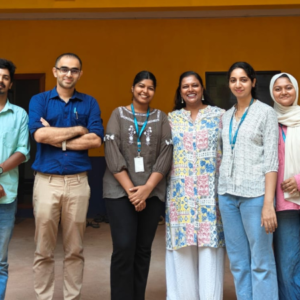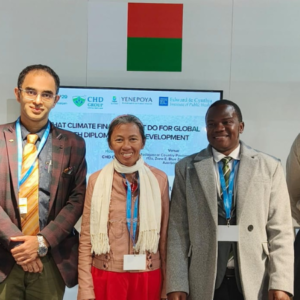Nutrition is a critical part of health and development. Better nutrition is related to improved infant, child, and maternal health, stronger immune systems, safer pregnancy and childbirth, a lower risk of non-communicable diseases, and longevity.
According to the UNICEF-WHO-The World Bank: Joint child malnutrition estimates – level and trends, 2023, suggests that in 2022, 45 million children under 5 years of age are wasted, among which, 13.6 million are severely wasted, and 148 million are stunted, while 37 million are overweight or obese in the world.
According to the National Family Health Survey-5, 32% of children under five were underweight, 35.5% were stunted, and 19% were wasted in India. In North Eastern states, most of them are experiencing an increased burden of malnutrition.
Assam witnessed around one percentage point improvement in stunting; however, the prevalence of wasting has increased from NFHS 4 to NFHS 5 (17% vs. 22%), and a similar trend can be observed for underweight during the same period (29.8% vs. 32.8%). An increasing trend can be noted for the percentage of children under the overweight category, from 2.3% during NFHS 4 to 4.9% during NFHS 5.
Analysing the NFHS 4 and 5 data for Meghalaya reveals that stunting has increased in the state (from 43.8% to 46.5%), but the percentage of children under 5 years who are wasted and underweight has reduced by 3% and 2%, respectively. Mizoram, Nagaland, and Tripura—all three states—have seen a rise in the percentage of children under 5 with stunting, wasting, underweight, and overweight. Sikkim has fared relatively better compared to other north-eastern states as the percentages of stunting, wasting, and underweight children have decreased.
Stunting among children in the north-east is caused by a number of factors, including poor maternal health, a lack of antenatal care, inadequate infrastructure and health care facilities, inadequate feeding and nutrition for women, and limited access to education, clean drinking water, and sanitary facilities. Lack of toilets, drinking water, and cooking fuels in the home environment has an impact on child malnutrition.
Every north-eastern state witnessed an increase in overweight populations, which clearly highlights the rising double burden of malnutrition in these states. Furthermore, an increase in the number of anaemic children and women can be noted in all of the north-eastern states except Meghalaya. This poses serious challenges as pregnant women were found to be anaemic as well, which gets reflected in poor pregnancy outcomes. Adequate diets and healthy feeding practises play a key role in strengthening the immune systems of children. Only Meghalaya and Tripura have improved percentages of breast-feeding children receiving an adequate complementary feed.
According to a recently released report by the Indian Council of Medical Research and the National Institute of Nutrition, what Indians eat, 2020 has shown that the north-eastern states of India consumed the highest total calories and carbohydrates.
Several programmes and best practises across the North East have been initiated to enhance the status of mother and child health in the region. For example, the Assam government encouraged women in rural communities to develop “nutrition gardens” where they could grow vegetables. Malnutrition in the North-East has to be addressed holistically through the scaling up of direct nutrition interventions and the coupling of them with nutrition-sensitive measures to close the nutrition gap.
In North-east India, agriculture plays a very important role in the economic and physical accessibility of food. The primary objective of agricultural development is to satisfy the essential commodity needs of society, but the same cannot be achieved at the cost of the local environment and the culture of the people. The Indian economy is predominantly agrarian in nature, and North-east India is no exception. In view of the importance of climate in agricultural production, agriculture in North- east India is considered highly sensitive to climate change, which may possibly impact agricultural production in these regions. Climate change can also diminish the nutritional value of crops and affect families’ livelihoods, reducing their incomes and making nutritious foods less affordable.
The nutritional challenges in northeast India point to the importance of good nutrition, which promotes not only better physical health and reduced susceptibility to disease but has also been demonstrated to contribute to cognitive development and academic success.
About the Author: Amon Wa I Sumer is pursuing Masters of Public Health (MPH)
Disclaimer: Views expressed are the author’s own. Edward & Cynthia Institute of Public Health or Yenepoya (Deemed to be University) are not responsible for contents or opinions reflected in this article.




